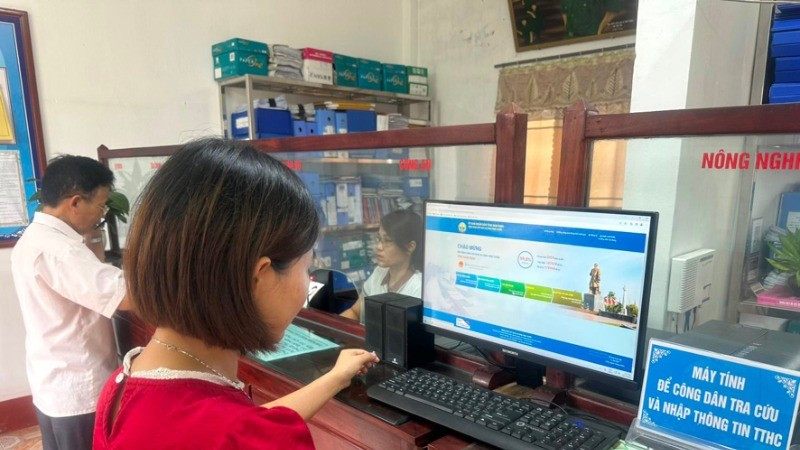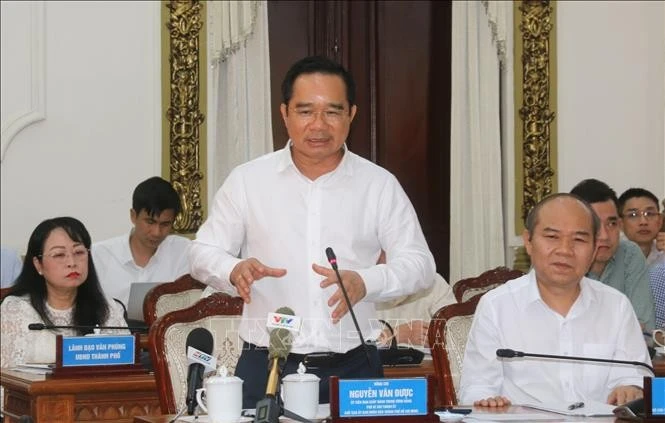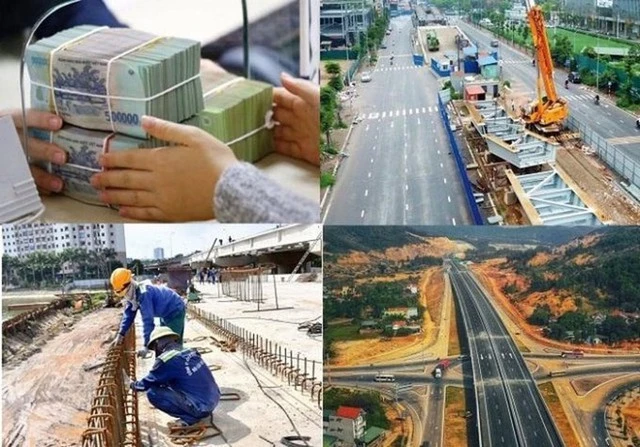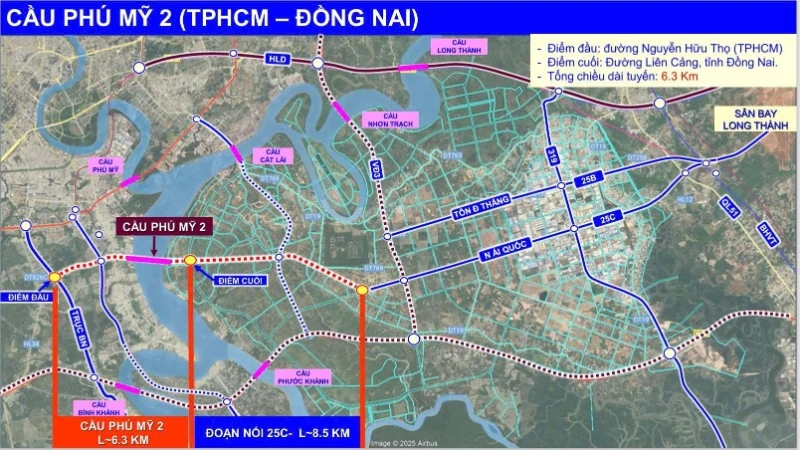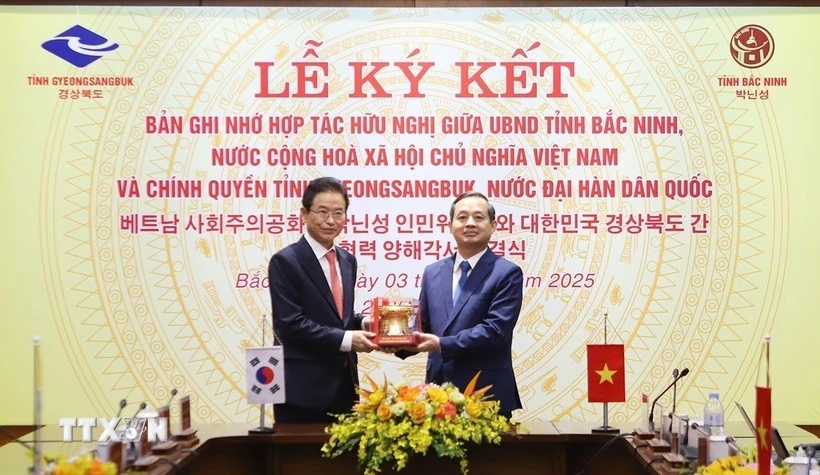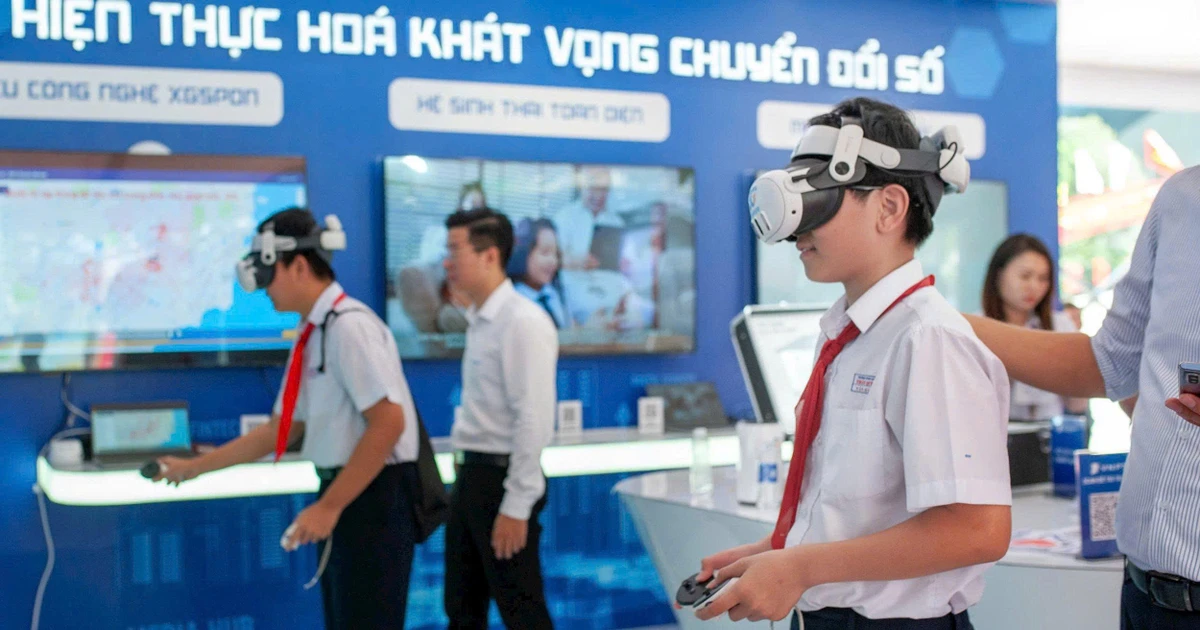In recent years, the northern province of Nam Dinh has made significant progress in applying science and technology, promoting digital transformation, and creating leverage for its socio-economic development. Regarding the digital transformation roadmap, the province has consistently ranked in the top 10 out of 63 provinces and cities nationwide, contributing to improving the Public Administration Reform Index (Par Index), ranked 6th out of 63 provinces and cities by the Ministry of Home Affairs.
Nam Dinh is one of the first 10 provinces and cities to complete the connection and exploitation of data from the National Population Database and is one of the four leading units nationwide in receiving and processing dossiers for two interlinked public service groups.
The province shines nationally in its digital economy building, particularly in e-commerce, where it ranks 4th among 63 provinces and cities and accounts for 9% of total retail sales. Its digital society is also thriving, with over 1.3 million electronic identification accounts activated, placing it among the country’s leaders in providing resources to empower digital citizens.
Development progress in digital society improved the quality of life for citizens and provided significant support for the campaign to build advanced and model new-style rural areas. These accomplishments provide a strong foundation for Nam Dinh to confidently and effectively implement the tasks outlined in Resolution No. 57-NQ/TW.
With a determined and urgent spirit, Nam Dinh has issued key plans, tasks, and solutions to make the development of science and technology, innovation, and digital transformation gradually become leading factors in the province’s socio-economic development. They serve as a driving force, actively contributing to building a digital government, digital economy, and digital society, clearly demonstrating the contribution of science and technology to Nam Dinh’s GRDP.
Specifically, by 2030, Nam Dinh aims to achieve advanced scientific and technological potential and innovation in many key areas, ranking among the leading provinces with relatively high incomes. The province strives to become one of the digital technology industrial hubs of the Red River Delta by 2045, with robust economic growth based on a digital foundation, aiming for the digital economy to account for 45% of GRDP.
At its first meeting, the Provincial Steering Committee for Science, Technology, Innovation and Digital Transformation Development outlined a 2025 plan with 22 tasks covering areas, such as raising awareness, transforming mindset, training officials and completing mechanisms and policies.
Notably, the province strives to form a training branch for high-tech human resources under a prestigious domestic university in the province to focus on developing basic science human resources, technical and high-tech industries, and strategic technologies (semiconductors, artificial intelligence and big data), comprehensively innovating the resolution of administrative procedures and providing public services regardless of administrative boundaries.
Based on this, the provincial Party Committee’s Popularisation-Education and Mass Mobilisation Commission have instructed departments and levels to promote popularisation simply and practically so that people can easily understand, remember, and implement it.
The Department of Education and Training has initiated discussions for the provincial Technical Pedagogical School to collaborate with the University of Science and Technology to develop plans to establish a Semiconductor Technology Faculty or a branch campus in Nam Dinh and to organise training for teachers on using AI technology. The provincial police force is implementing Project 06, promoting digital payments and ensuring network information security.
The Office of the Provincial People’s Committee, the Department of Science and Technology, along with departments and localities are organising administrative reforms, building a paperless working environment at the communal level to quickly meet the actual conditions as the province and the whole country are quickly organising and rearranging administrative units and streamlining the apparatus.
